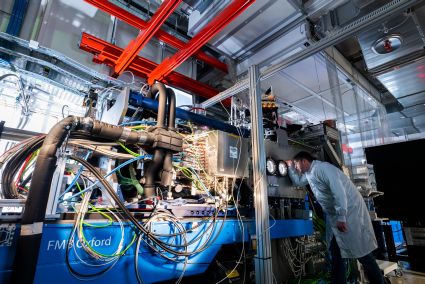XFEL: Insights into coronavirus proteins using small angle X-ray scattering
Insights into coronavirus proteins using small angle X-ray scattering

SAXS is a powerful technique as it allows researchers to gain insights into protein shape and function at the micro- and nanoscales. The technique has proven to be extremely useful in investigating macromolecular structures such as proteins, especially because it removes the need to crystallize these samples. This means researchers can study the sample in its native form under physiological conditions under which biological reactions occur.
“To our knowledge these are the first-ever ‘form factors’ derived from a macromolecular solution experiment at an X-ray laser,” says Adam Round, scientist at European XFEL’s SPB/SFX instrument (Single Particles, Clusters, and Biomolecules & Serial Femtosecond Crystallography) on which the experiment was conducted. A form factor is the observed scattering pattern from which all the noise and background is removed leaving only the signal from the sample. This gives a measure of the shape and size of a protein and how it changes when, for example, in this case antibodies bind. Fueled by this important milestone, the collaboration gathered close to a PetaByte of data. “By implementing software that was able to process this huge amount of data and filter out the unwanted noise, we were able to recover the very weak signal from the proteins. The hope is with the data already collected, and that can be collected in the future using this technique, we can help in developing therapeutics such as mRNA vaccines and monoclonal antibodies for COVID-19 and other,” says Round.
The experiment involved research teams from European XFEL, EMBL-Hamburg, CFEL, DESY and the Max Planck Institute for the Structure and Dynamics of Matter. “Our success is based on the collaborative approach, the high-repetition rate of European XFEL, and the software that was able to filter through the massive amount of data that was produced,” says principal investigator Dmitri Svergun, who heads the Biological Small Angle Scattering group at EMBL Hamburg. “This was just the first step as the experiment has opened up the exciting prospect of using ultrafast-time resolved SAXS with biological samples at the European XFEL” he adds.
